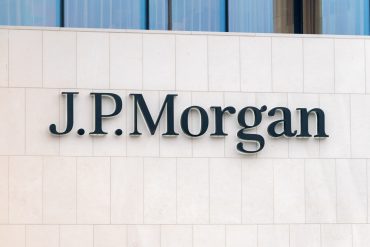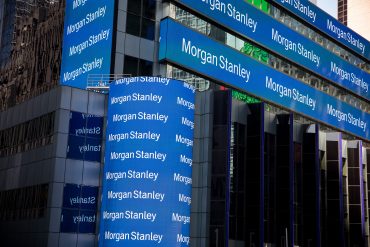

PMorgan’s trading revenue surge reflects market volatility benefits while investment banking operations face continued industry headwinds
Key Takeaways
- Trading revenue surge expected: JPMorgan forecasts nearly 10% year-over-year increase in trading revenue to $31 billion for Q2 2025, driven by market volatility from trade policy uncertainty.
- Mixed earnings outlook: Wall Street expects earnings of $4.48 per share on revenue of $43.9-44.16 billion, representing a potential 13% revenue decline and 27% earnings drop year-over-year.
- Investment banking challenges persist: The bank’s investment banking sector faces a projected 10% revenue decline to $7.5 billion, highlighting ongoing dealmaking difficulties across the industry.
Introduction
JPMorgan Chase prepares to report second-quarter earnings that will provide crucial insights into both Wall Street’s trading boom and Main Street’s economic health. The nation’s largest bank faces a mixed performance landscape, with surging trading revenues offsetting weakness in investment banking and lending operations.
Markets anticipate earnings of $4.48 per share on revenue between $43.9 billion and $44.16 billion when results are released Tuesday morning. The report carries heightened significance as it reflects how major financial institutions navigated trade policy volatility and shifting economic conditions during the quarter.
Key Developments
Trading operations emerge as JPMorgan’s standout performer, with the bank projecting nearly 10% year-over-year growth in trading revenue to reach $31 billion. This surge stems from market volatility triggered by former President Trump’s trade policies, which created significant trading opportunities across fixed income and equity markets.
Fixed income trading revenue is anticipated to reach $5.2 billion, while equities trading is projected at $3.2 billion. The volatility began in April when markets declined following major tariff announcements, then recovered swiftly, creating the type of market conditions that benefit large trading operations.
Investment banking presents a contrasting narrative, with revenues expected to decline 10% to $7.5 billion. This downturn reflects persistent challenges in dealmaking activity that have affected the broader industry throughout the quarter.
Market Impact
Bank stocks have responded positively to expectations of strong trading performance and deregulation prospects. The S&P 500 Banks Index gained 14.4% over the period, outperforming both other financial sectors and the broader market index.
JPMorgan shares have advanced approximately 22% year-to-date, supported by steady loan demand, rising interest income, and strength across consumer banking and credit card units. The options market indicates an expected earnings move of 3.75% in either direction following the results.
The bank’s recent capital management actions include raising its quarterly dividend to $1.50 per share from $1.40 and authorizing a new $50 billion buyback program, signaling management confidence in financial strength.
Strategic Insights
JPMorgan’s performance reflects broader industry trends favoring large-scale trading operations over traditional investment banking activities. High asset levels benefit wealth management divisions at JPMorgan, Goldman Sachs, and Morgan Stanley, while robust employment figures have limited credit loss concerns in lending operations.
The bank maintains strategic focus on net interest income, driven by higher deposit balances and card services strength. Digital payment growth continues through JPMorgan Payments, which reported $4.6 billion in Q1 2025 revenue, reflecting industry-wide shifts toward digital finance solutions.
Significant resources flow toward digital infrastructure, payments innovation, and AI-driven solutions for both internal operations and client services. The bank’s credit loss allowance increase of $973 million, bringing total reserves to $27.6 billion, demonstrates prudent risk management rather than actual credit deterioration.
Expert Opinions and Data
Matt Stucky, chief portfolio manager of equities at Northwestern Mutual’s wealth management division, notes that market volatility “might contribute to a rebound in investment banking revenue over the quarter.” The assessment highlights how trading strength could partially offset investment banking weakness.
Keefe Bruyette analyst Christopher McGratty upgraded JPM to Outperform from Market Perform, raising the price target to $327 from $253. McGratty cites “JPMorgan’s business model strength” as the primary reason for the upgrade, according to CNBC.
CEO Jamie Dimon has characterized the economic outlook as having a “50-50 chance of recession” while emphasizing JPMorgan’s role as a “source of strength” during uncertain times. The bank’s excess capital position includes $60 billion in excess capital and a CET1 ratio of 15.4%.
Wall Street analysts maintain a consensus Moderate Buy rating among 22 analysts, with average price targets of $293.00 from 23 analysts. The range spans from a high estimate of $336.00 to a low of $196.34, suggesting modest upside potential of 1.33% from current levels.
Conclusion
JPMorgan’s second-quarter results will demonstrate how America’s largest bank navigated contrasting market conditions across its diverse business lines. Strong trading revenues appear positioned to offset investment banking weakness, while the bank’s substantial capital reserves provide flexibility for continued shareholder returns and strategic investments.
The earnings report serves as a bellwether for both financial sector performance and broader economic health, with implications extending beyond JPMorgan to the entire banking industry’s quarterly reporting cycle.








